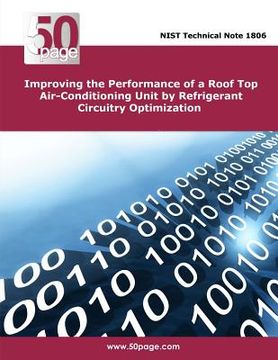Share
Improving the Performance of a Roof Top Air-Conditioning Unit by Refrigerant Circuitry Optimization
Nist
(Author)
·
Createspace Independent Publishing Platform
· Paperback
Improving the Performance of a Roof Top Air-Conditioning Unit by Refrigerant Circuitry Optimization - Nist
Choose the list to add your product or create one New List
✓ Product added successfully to the Wishlist.
Go to My Wishlists
Origin: U.S.A.
(Import costs included in the price)
It will be shipped from our warehouse between
Wednesday, July 17 and
Wednesday, July 24.
You will receive it anywhere in United Kingdom between 1 and 3 business days after shipment.
Synopsis "Improving the Performance of a Roof Top Air-Conditioning Unit by Refrigerant Circuitry Optimization"
This study demonstrates the performance improvement of an air-to-air roof top unit (RTU) achieved by optimizing an evaporator0/00s refrigerant circuitry using evolutionary algorithms. The subject of this study is a unit with a cooling capacity of 7.5 Tons (26.4 kW). The RTU employs two separate refrigerant cycles having separate compressors, condensers, and thermostatic expansion valves (TXV) but using a single evaporator slab in which two separate refrigerant circuits are implemented. We modified the RTU by replacing the refrigerant-to-air condensers with water cooled brazed plate heat exchangers in order to facilitate testing. Performance tests were conducted in a conditioned environmental chamber in line with AHRI standard 340/360; in order to accomplish this, we maintained the liquid line saturation pressure and subcooling from the manufacturer0/00s test data by adjusting the condenser water flow rate and temperature. We also measured the in-situ air velocity profile using Particle Image Velocimetry (PIV), a non-intrusive, laser-based technique. The measurements showed that the range of air velocities passing through the heat exchanger varied from 0.5 ms-1 to 3.0 ms-1, with the integrated average of the measurements being 1.75 ms-1. The PIV data was used to generate a map of the air flow distribution through the heat exchanger, which served as the basis for refrigerant circuitry optimization.
- 0% (0)
- 0% (0)
- 0% (0)
- 0% (0)
- 0% (0)
All books in our catalog are Original.
The book is written in English.
The binding of this edition is Paperback.
✓ Producto agregado correctamente al carro, Ir a Pagar.

